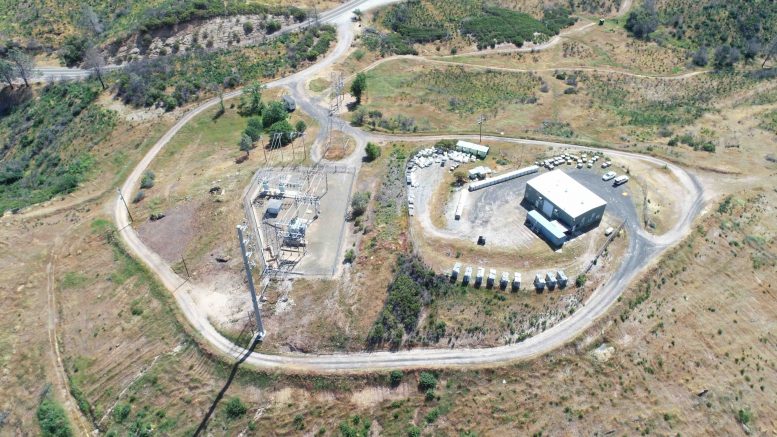Stratabound Minerals (TSXV: SB; US-OTC: SBMIF) is a precious and base metals exploration and development company with a portfolio of projects in North America.
The Toronto-headquartered junior owns properties in several world-class mining jurisdictions, including California, Yukon Territory, Ontario, and New Brunswick.
Stratabound is focused on advancing its recently acquired 100%-owned Fremont gold project in California’s Mariposa County, about 260 km east of San Francisco.
The 1,356-hectare property covers four km of a mineralised trend along the 200-km-long prolific Mother Lode gold belt, which hosts several significant gold deposits. These include Sutter Gold Mining’s Lincoln gold mine, about 140 km northwest of Fremont, and the Long Valley gold project, owned by Kore Mining (TSXV: KORE: US-OTC: KOREF), approximately 260 km to the east.
Kim Tyler, Stratabound’s president and CEO, says that its acquisition of Fremont “will allow us to transition from an early-stage gold exploration company to a potentially near-term gold producer and complements our existing pipeline of early and mid-exploration stage gold and copper projects.”
He said the company “plans to turn Fremont into a producing mine within two years by first initiating a small-scale ‘starter’ operation that will support the ramp-up to a full-scale operation and will provide a powerful catalyst of growth for our shareholders.”
According to Tyler, this approach “allows for lower capital, social, regulatory, and environmental risks when compared to conventional high-risk ‘go-big-or-go-home’ mine development projects.”
Stratabound acquired Fremont in August through the acquisition of California Gold Mining. The brownfield project hosts the historic Pine Tree-Josephine mines. The two former producing mines were connected at depth and have two shafts, multiple adits, and extensive underground workings extending over 800 metres. Between the 1850s and 1994, the mines produced a combined 126,000 gold ounces from 540,000 tonnes of ore grading eight grams gold per tonne.
Fremont “has significant upside exploration potential, especially along strike and down dip continuation of the existing mineralisation,” Tyler said. “It also has access to excellent infrastructure, with Highway 49 transecting the property, an electric substation on-site, and has a private well on-site and access to the nearby Merced River, providing good access to water.”
An updated mineral resource estimate for Fremont in October estimated 10.24 million indicated tonnes grading 1.6 grams gold per tonne for 526,000 oz. contained gold and inferred resources of 10.92 million tonnes of 1.29 grams gold per tonne for 452,000 gold ounces.
The estimate was based on drill results from 162 drill holes (25,970 metres) on the Pine Tree-Josephine deposit in the centre of the property. Mineralization at the property occurs 950 metres along strike and 350 metres to depth. It remains open along strike and at depth.
“While the historic high-grade underground mining extended to at least twice this depth, it remains unevaluated and is not included in the current resource estimate,” said Tyler, adding that additional unevaluated mineralisation also occurs at the Queen Specimen and Chicken Gulch zones and several target areas extending over four km of strike on either side of the Pine Tree-Josephine deposit.

The Fremont Pine Tree Josephine Deposit showing exposed quartz vein of Josephine within red oxide zone. Credit: Stratabound Minerals
The Queen Specimen zone was discovered following the first exploratory drill program on the property in 2016 and comprised 10,000 metres of resource drilling completed in 2018. Highlights included drillhole DD-16-052, which intersected 15.8 metres grading 2.2 grams gold per tonne from 100 metres downhole, including 9.1 metres of 3.73 grams gold, and hole DD-18-015, which returned 14.9 metres of 4.67 grams gold from 108.5 metres, including 1.8 metres of 22.91 grams gold.
Stratabound is compiling historic hard copy data into digital format and undertaking environmental studies on Fremont, which is expected to take up to two years of seasonal data collection, said Tyler.
“Our near-term focus will be to prepare the path for production by initiating baseline environmental data collection, engaging the local communities and regulatory authorities, and initiating long-lead items required for permitting, as well as refining our in-house mine plan in preparation for a future preliminary economic assessment,” he said.
Next year, the company plans to start definition drilling on a start-up pit, which is slated for the second quarter, and release an updated resource estimate in the third quarter. It also plans to release a preliminary economic assessment in the first quarter of 2023.
Stratabound’s other properties include the Golden Culvert gold project in southeast Yukon Territory, approximately 200 km north of Watson Lake, and the Dingman gold project in Ontario, 175 km northeast of Toronto. It also owns two properties in New Brunswick — the McIntyre Brook gold project, about 100 km west of Bathurst, and the Bathurst camp properties, including the Captain copper-cobalt-gold deposit, the Taylor Brook lead-zinc-silver-copper deposit, and CNE lead-zinc-silver per project situated in the heart of the renowned Bathurst Mining Camp, approximately 35 km southwest of Bathurst.
The preceding Joint-Venture Article is PROMOTED CONTENT sponsored by STRATABOUND MINERALS and produced in cooperation with The Northern Miner. Visit www.stratabound.ca for more information.


Be the first to comment on "JV Article: Stratabound Minerals aims to transition from explorer to producer following Fremont acquisition"